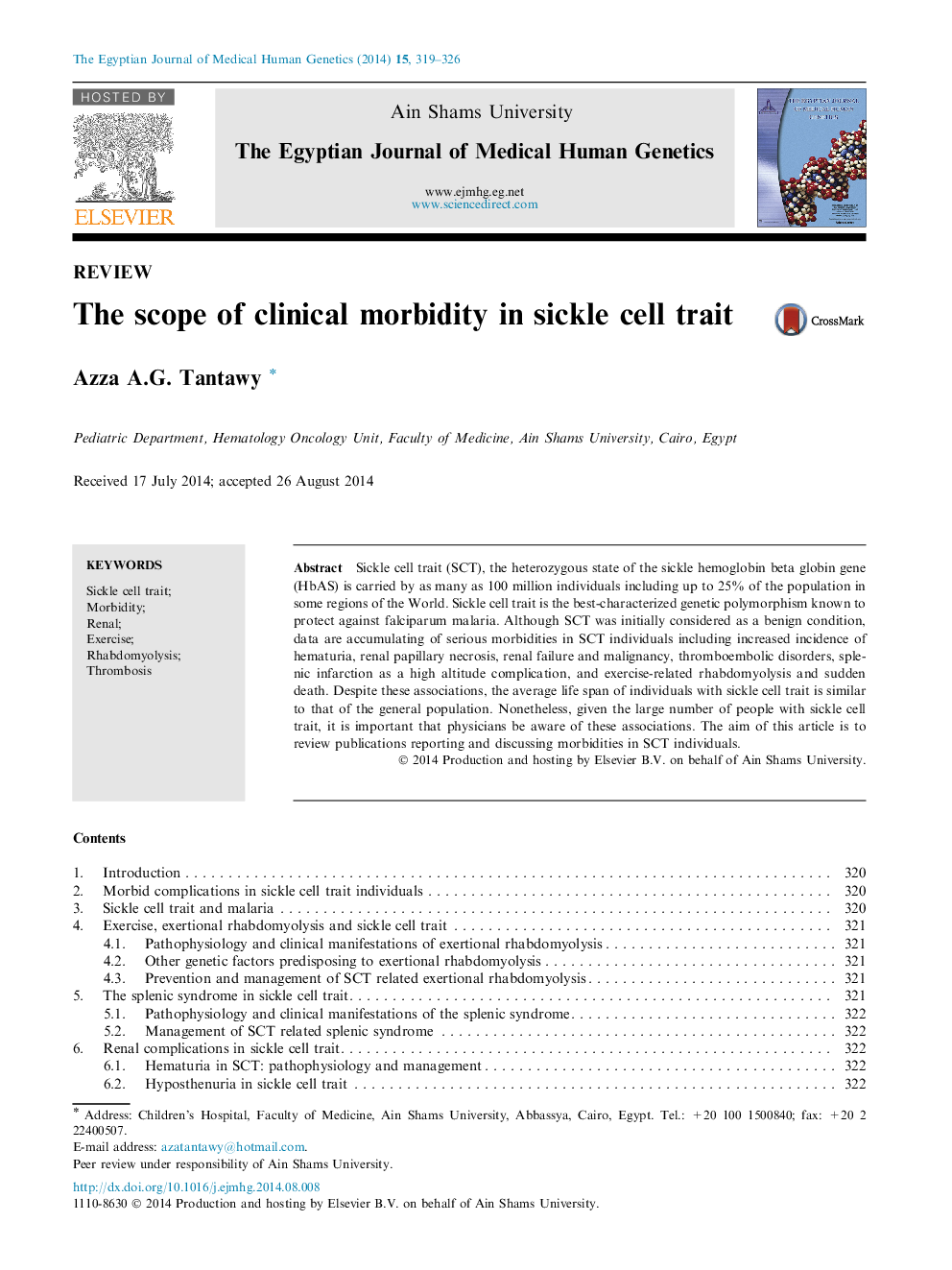| Article ID | Journal | Published Year | Pages | File Type |
|---|---|---|---|---|
| 2178164 | Egyptian Journal of Medical Human Genetics | 2014 | 8 Pages |
Sickle cell trait (SCT), the heterozygous state of the sickle hemoglobin beta globin gene (HbAS) is carried by as many as 100 million individuals including up to 25% of the population in some regions of the World. Sickle cell trait is the best-characterized genetic polymorphism known to protect against falciparum malaria. Although SCT was initially considered as a benign condition, data are accumulating of serious morbidities in SCT individuals including increased incidence of hematuria, renal papillary necrosis, renal failure and malignancy, thromboembolic disorders, splenic infarction as a high altitude complication, and exercise-related rhabdomyolysis and sudden death. Despite these associations, the average life span of individuals with sickle cell trait is similar to that of the general population. Nonetheless, given the large number of people with sickle cell trait, it is important that physicians be aware of these associations. The aim of this article is to review publications reporting and discussing morbidities in SCT individuals.
